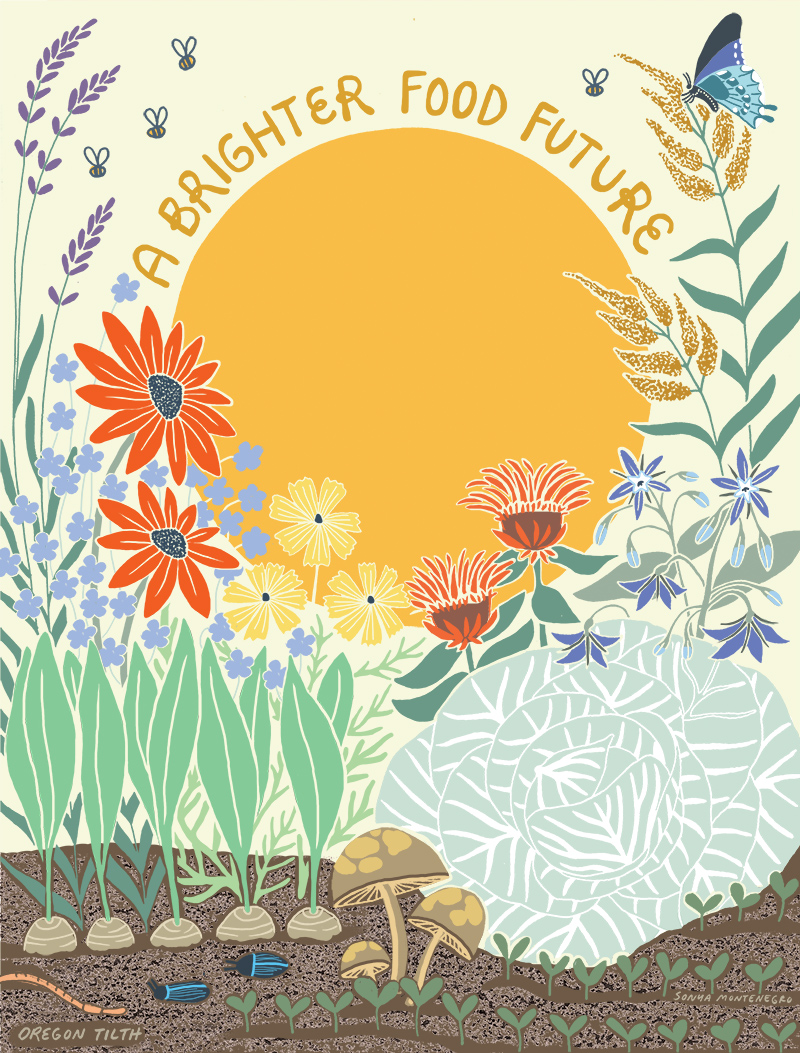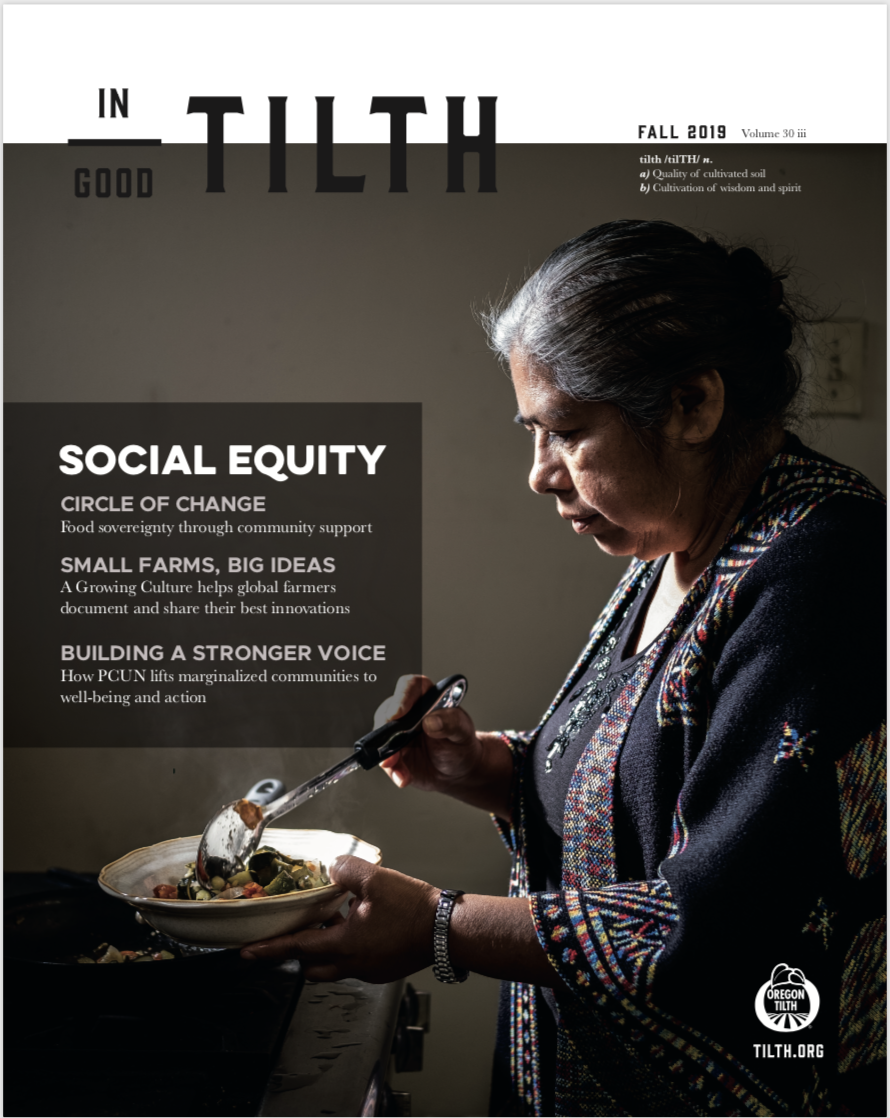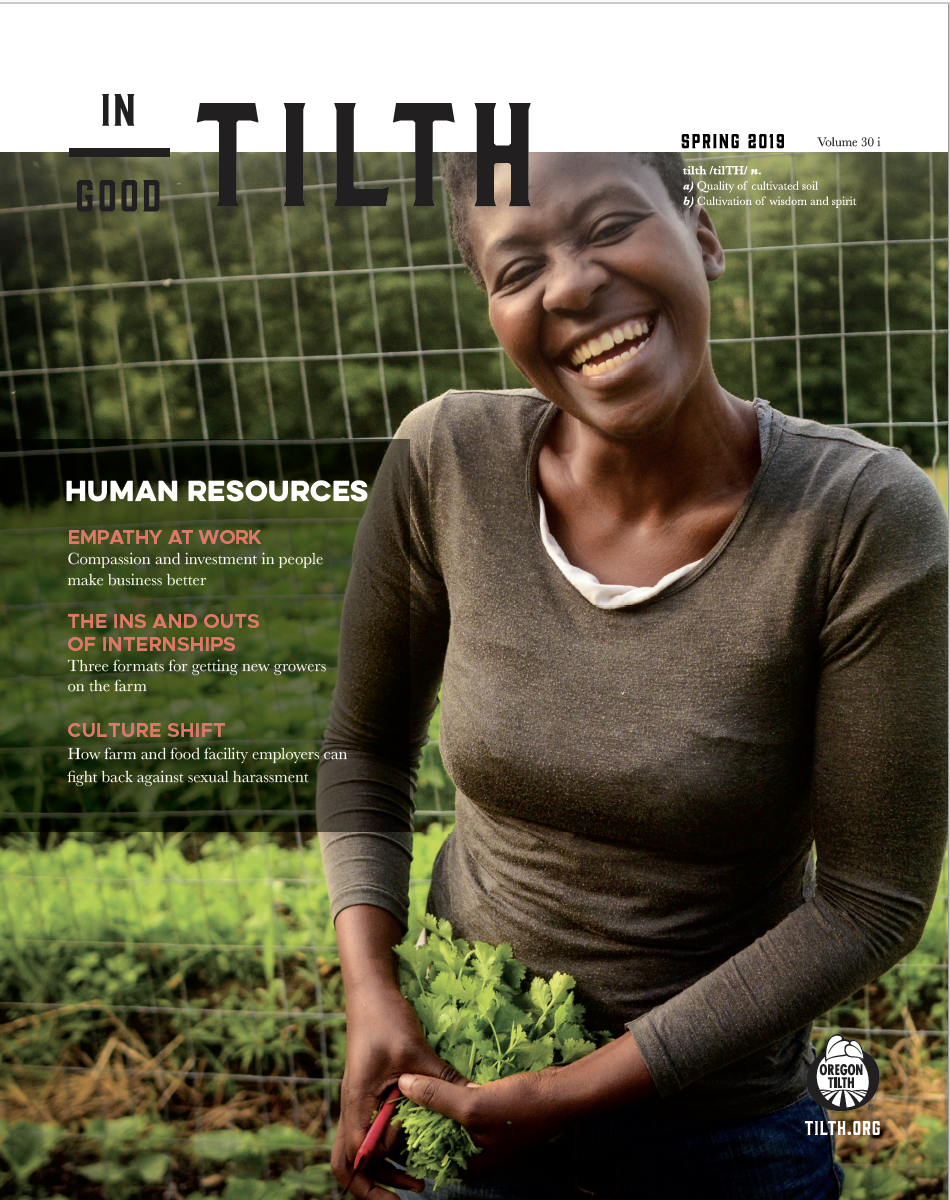America tucked itself in the night of Dec. 31, 1997, snug in the assurance that the status quo would greet it in the morning. It was wrong. Because suddenly there were female farmers everywhere, practically springing up out of the ground — 13.4 percent more of them, so it seemed.
It was a miracle.
Well, not really. The USDA simply changed a question on the 2002 Census of Agriculture, and the number of female farm operators suddenly spiked in the data. To whit: the agency made room, in its epic five-year census, to list more than one operator per farm.
Changing a question seems like a minor thing. But it’s not. It is a statistically bewitching statement about the invisibility of women in America, particularly when they’re engaged in something productive and meaningful.
Is a women farmer the same as a male farmer?
Bridget Holcomb, executive director of Women, Food and Agriculture Network, summarizes it: You, a woman, walk into a farm store. You are dressed for farm work. You are dressed this way because you are a farmer. You ask the salesman at the counter about repair parts for a hay baler, maybe for recommendations about buying seed stock. The salesman, frowning, leans right, he leans left, straining to see past your shoulder. There is some kind of obstruction in front of him. This obstruction is you, blocking the view of the man that surely must be back there somewhere.
It starts early, says Holcomb, based in Ames, Iowa. “It’s not like, as a kid, you tell your parents ‘I want to be a farmer when I grow up,’ and they say, ‘Oh, that’s great, honey! Let me help you!'”

Holcomb says her organization, based on surveys, believes about 49 percent of Iowa farms are owned by women. “We have no reason to believe it’s any different for the rest of the country,” she adds.
Chris Nordick, who’s farmed 36 acres in Davenport, Iowa, for the past eight years says, “Most people don’t think ‘female’ and ‘farmer’ in the same sentence. If I go into an equipment store, the salespeople address themselves to my husband. It’s just not in their nature to ask, ‘Who’s the farmer here?’ That’s just one of the problems we face. I’m not intimidated by being an iconoclast, but for beginning female farmers it’s a serious issue.”
The invisibility of female farmers isn’t merely a sensory problem. Farming equipment, clothing, marketing and even financing programs have been, historically, designed to favor or appeal to men. As have patterns of land inheritance. This has severe ramifications for women.
A few miles from Nordick’s farm, John Deere — the name we think of when we think tractors — runs its world headquarters in Moline. Despite the roughly even division of male and female farmers in Iowa, Deere doesn’t seem to see female farmers. They’re absent from the company’s website, save for one — a woman in the passenger seat, of course, of a monster of a tractor with a man at the wheel.
Such blankness in the spaces where women belong drives Audra Mulkern nuts. Mulkern is a writer/photographer in Snoqualmie Valley, Wash., focused on collecting and publishing images and stories about female farmers in the U.S, Iceland and Europe. She’s so committed to un-erasing women from the landscape that she neither watermarks her images (which designates them as un-publishable without prior consent), nor charges for them. “I want them to flood the Internet,” Mulkern explains. “In online searches, if you type ‘farmer’ all you get is men, and I’d like to change that.”
Mulkern is dead on, with one caveat; a Google image search for “farmer” does net a few women, but rarely women … farming. What comes back instead, in the first 200 or so images, are five to six women: the first is a redhead in a short skirt in a grassy field, kissing a male farmer (well, he’s wearing plaid, so that must be how he got in there). The second is a brunette with amplified cleavage, wearing a short skirt, toying with her hair next to two hay bales and a pitchfork.
It’s as if there’s some kind of sub-routine in Google’s search coding that acknowledges you designated a word that ostensibly means “those who work the land,” but what you really meant was “give me pictures of men in plaid shirts and, while you’re at it, throw in some legs, too.”
The case of the disappearing women
If you begin to look at the ways women disappear from the landscape, things look dark indeed. Example: The USDA’s 2012 ag census summary on women farmers announces that women “control seven percent of U.S. farmland, account for three percent of sales.” This is a fascinating citation, considering that in the next paragraph the USDA notes that 30 percent of U.S. farmers (as far as the census data determined) are women. Why, in essence, bury the larger figure? Is it a holdover, a purposeful exclusion, of the USDA’s male-dominated control of U.S. agriculture? Is it a conscious effort to diminish the perception that female farmers aren’t just a novelty or some kind of cultural fluke? Is Iowa truly some kind of farming anomaly? If the USDA changed, once again, its census questions, would the numbers spike again?

That would be pure speculation, and given that the agency didn’t respond to my questions about female farmers, only another kind of absence prevails here — an unsettling silence, and wonder. But in that silence, I’ll insert this: in a study published in 2009 in the Journal of Agricultural and Resource Economics, titled Gender Bias Claims in Farm Service Agency’s Lending Decisions, researchers (focused on patterns of FSA loans to farmers in Georgia) noted (based on multiple studies): “women are actually more creditworthy than their male counterparts,” “women’s credit ratings do not necessarily translate into better credit terms,” “women borrowers have a higher probability of being charged sub-prime interest rates than male borrowers,” “women entrepreneurs striving to enter self-employment were usually disadvantaged by their gender through overt discrimination by bank lenders …” and the list goes on.
Female farmers, in Love vs. Johanns, filed a civil action suit in 2000 against the Farm Service Agency (a branch of the USDA), alleging gender discrimination in the FSA’s lending programs. The USDA settled for nearly $1 billion in a discrimination suit with black farmers in 1999, but the women’s suit was dismissed by a federal judge on the grounds that the female farmers’ claims “lacked commonality.” The researchers (noted above), nevertheless, went on to examine the FSA’s lending programs in Georgia.
Among their findings: out of all loan applications submitted to the FSA from 1999-2002, 7.06 percent of applications submitted by white borrowers were approved. Only 0.78 percent of non-white borrows were approved. For male borrowers, 6.78 percent were approved. Only 1.12 percent of female applicants were approved.
The number of female farmers has grown 18.62 percent, every five years since 1978.
The researchers’ conclusion: “this analysis does not produce any overwhelming evidence of discrimination.” Surprise. If you are white and male, you are, at a minimum, 600 percent more likely to get approved for an FSA loan, but that’s (somehow) not significant.
So the women are not really there. They just fade into invisibility. And yet they are there, still working, still surviving as farmers. Buried in the researcher’s study is the fact that the number of female farmers has grown 18.62 percent every five years since 1978. And the entry rate of women in farming has consistently exceeded the exit rate, while the numbers for men (over that same span) have declined.
The s-l-o-w rise of the new normal
There likely will come a time when a female farmer walks into an equipment store and a salesperson will ask if she’d like to hear about a great deal on a new tractor. It won’t be tomorrow. More than the farm catalogs, and Google, and the ag census, and the banks will have to change. Iowa — despite the fact that it unquestionably leads the nation in support for female farmers — will have to change. As will the nation and its culture.
Farmer (and Iowa’s current poet laureate) Mary Swander points out that some of the state’s ethnic traditions deem that the family farm goes to the oldest son. “The daughters are given nothing. If they don’t get married, they will, basically, starve to death.”
Swander adds, “I hear it from them. The daughters, tears streaming down their faces. They were the ones who wanted to farm.” The son might want nothing to do with the place, but it’s the son who inherits. “The girls, because they’re girls, got cut out of the will.”
It’s better, Swander says, than it used to be, even if “better” doesn’t mean “it’s now good.” Students from Iowa State University’s Sustainable Agriculture Program came to see her organic farm a few years ago. Two thirds were women, she notes. In the late ’60s, she herself wanted to a veterinarian, but Iowa State didn’t allow women to apply. Swander believes enrollment in Animal Sciences programs are now about 90 percent women (for which Colorado State University professor Temple Grandin deserves due credit, for the inspiration she’s given women everywhere). “The minority now,” Swander observes, “is a male who grew up on a farm.”
The assumptions will change. Maisie Ganz, who runs Soil Sisters Farm with Willow Hein in Nevada City, Calif., will hear a different kind of question. When she tells people she’s a farmer, she won’t hear the present-day response: “Oh, you do the farm’s books? That’s sweet. You mean you sell the vegetables [some man grew]? How nice.”

Ganz notes that through most of her adult life (she’s 30), nearly all of it spent farming, media in her area have published stories about male farmers. Being an exceptional writer, she pays attention to the details therein. It seems, she says, to earn the title farmer you must build a barn. You must purchase a dramatic number of goats. Or acquire vast tracts of land. This makes you a farmer.
“I have not built a barn,” she observes, but not sadly. “Thus there is no palpable return I can show the world. People don’t ask me what’s my quality of life, or how many people I’m feeding. They ask me if I’m making it financially.”
The culture will have to change to stop showing only boys how to use tools. This is a consistent problem, noted by nearly every female farmer interviewed for this story. It’s an impediment to even considering working on a farm, much more so for buying one. Rebecca Thistlewaite, a farmer in Mozier, Ore., says she knows of several female farmers who were killed or injured while working with heavy equipment. She believes a lack of training — there’s a paucity of programs that either encourage women or are designed for them — was responsible for each accident.
For some, a change in perception will come as a shock. Mulkern tells the story of interviewing Michelle Erickson-Jones, a young farmer who operates 10,000+ acres in southern Montana, for Mulkern’s Female Farmer Project. Erickson got a phone call from a man who wanted to buy a single bushel of corn. Upon learning that her father was out of town, he decided to wait till her father came home to pick up the corn.
“Sure,” she said, “you can wait, but you’ll still have to make the check out to me, because I own the corn.”
It could be simple, seeing female farmers. We just open our eyes. Chris Nordick’s husband, Gary, already did his part. She says he made up business cards. When he needs to, he can pull them out at the equipment store.
They say, “Gary Nordick, the farmer’s husband.”



















